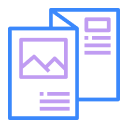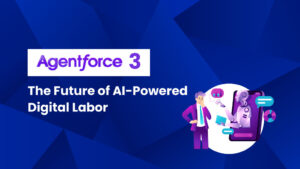As a player in the field of business, I hope you will be well aware that finding a post-production bug is like tossing the customer faith & trust with ten times costlier than finding the same in the early stage of the cycle. Moreover, the fix needs to go through the complete release cycle of Development, Testing, Build & Release, and then into the production or as a bug fix release, which is time-consuming as well.
So, how to avoid such challenges?
To avoid such challenges, we can follow any of the approaches,
Avail a half-cooked solution and face the same issue again and again, which will block progress again & again.
Or
You can engage the full team of certified professionals starting from Business Analysts, Solution Architects, Designers, Developers, Testers, QA experts. This will not only provide a safe & secure solution but also on-time completion with the required additional resources on an ad hoc basis.
The current trends in the field of Salesforce QA testing are:
- Rapid Digital Transformation: Since there is an increase in digitization of the business, there will be an increase in demand for QA testing using Salesforce
- Continuous Integration: The Salesforce QA testers should adapt themselves to start testing the application as early as possible. It is better to test the application in collaboration with the development team.
- Shift to cloud-based and IoT based applications: QA testers should be aware of cloud-based, and IoT applications
- Increase in Test automation: There will be an increase in test automation. So, QA testers should be aware of the latest tools used in the testing sector
- Performance Engineering: QA testers should understand performance engineering, which includes a better understanding of code, database schema, and queuing theory.
- AI + Testing: The advent of AI has given rise to AI-driven testing and quality assurance.
The next question comes here, to have a robust solution, what all the different types of testing we cover in our QA coverage?
| Functionality Testing | Testing of all supported Functionality. |
| Security Testing | All Security related test cases to uncover the vulnerabilities of the system to determine the data & resources are protected. |
| Performance Testing | Performance testing is to determine the speed, responsiveness, and stability of the application under a workload. |
| Frontend & Backend Testing | Frontend and Backend testing is to test the presentation layer of a three-tier architecture in a web application. |
| Lightning Testing Service | Salesforce Lightning Testing Service (LTS) is to mitigate the risk of complexity. |
| Classic Testing | Salesforce Classic testing to validate the configuration and customization performed in SDFC. |
| UAT | Support for User Acceptance Testing (UAT). |
| Regression Testing | Regression Testing to verify the existing functionality after any code change. |
| Workflow Testing | Workflow Testing to check each software workflow accurately reflects the given business process. |
| Configuration Testing | Configuration Testing to check with the different combinations of software and hardware to find out the optimal configurations that the system can work without any issues. |
| Acceptance Testing | Acceptance Testing is to determine whether or not the software system has met the required specifications. |
| Production & Release Testing | Production and Release Testing during product deployment. |
| Integration Testing | Integration Testing to test individual units are combined and tested as a group. |
| Usability Testing | Usability Testing to observe users as they attempt to complete the tasks with different types of designs, from user interfaces to physical products. This includes Lightning testing, LWC testing, VF Page testing etc. |
| Unit Testing | Unit Testing by the Development team. |
| Customization Testing | Customization Testing is a process of testing and analysis in-house using the latest technologies to verify the solutions for the custom products. |
| Sandbox Testing | Sandbox Testing is an isolated environment to test without affecting the platform. |
| Automation Testing | Automation Testing, to automate all possible regression test cases and run in each & every release cycle through automation. This will be efficient & reduce the manual effort. |
| Salesforce1 Testing | Mobile Salesforce Testing to verify the application is working as expected in the mobile platform. |
| Compatibility Testing | Cross-Browser Compatibility Testing, to verify the application is working as expected across different browsers. |
| API Testing | API Testing, through Postman & Workbench. |
| Integration Testing | Data Integration Testing, to verify the module or component which works fine individually, does not have any issues when integrated. |
| Low Code Testing | Salesforce Low Code Testing, to verify the Flows, Quick Action, Strategy Builder, etc. |

As we already know manual testing is time-consuming & repetition of the same is not error-free. Also, manual testing of Salesforce CRM is not possible, for efficient & error-free results, automation is the best solution, which will reduce cost due to on-time investment, and help to increase the ROI also.
So, if we will conclude the overall benefits of the best practices, then we get the whole product efficiency, optimization of the processes, better customer experience with growth in the earnings, and many more. If you need Certified Salesforce QA service can contact us.





















